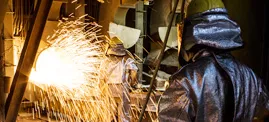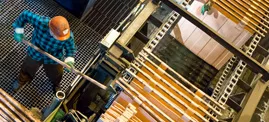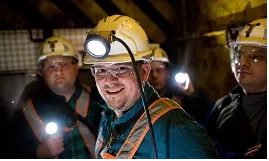General Information
The deposit areas operated by the Polkowice-Sieroszowice Branch are located to the west and north-west of the Polkowice city limits in the Polish region of Lower Silesia.
From a natural point of view, KGHM Polska Miedź S.A., as a company, exploits one large deposit of copper ore, which was historically recognised in parts and included in the production within arbitrarily identified separate mining areas. In the history of KGHM, there have been many changes in the boundaries of mining areas, mostly during changes or extensions of held mining licences. At present, KGHM Polska Miedź S.A. operates on seven mining areas, which are separate mining allocations within the framework of the mining licences obtained and the agreements signed for the establishment of mining usufruct with the State Treasury.
The Polkowice-Sieroszowice mine conducts its core mining activity in four areas: Polkowice, Radwanice Wschód, Sieroszowice and Gaworzyce, as well as in the Głogów Głęboki – Przemysłowy mining area, where an investment project related to accessing the deposit for exploitation is being implemented.
The recoverable resources of copper ore available to the mine in the mining areas listed above (as at 31.12.2024) amount to 359 million tonnes of copper ore. The copper content in the ore is about 2.66%, and silver – approx. 60 g/Mg
In the part of the Sieroszowice mining area, above the copper ore deposit, at a distance of 80-100 metres, a deposit of rock salt has been documented, with a thickness ranging from 40 to 150 metres, from which over 300 thousand tonnes of rock salt are extracted annually for the domestic market.
The copper ore in the mining areas managed by the Polkowice-Sieroszowice mine is polymetallic; besides copper, silver is another important metal, the content of which is, respectively: 46 g/Mg in the copper ore deposit in the Polkowice area, 65 g/Mg in the Sieroszowice area and 50 g/Mg in the Radwanice Wschód and Gaworzyce areas. In the Głogów Głęboki mining area, the average silver content for recoverable resources amounts to 84 g/Mg.
The sulphide copper-silver mineralisation forming the deposit is characterised by a certain variability and may include sandstone rocks, shales and carbonate rocks in different proportions. In the deposit areas held by the Polkowice-Sieroszowice mine, carbonate and shale ore dominates, accounting for over 77% of the extracted ore, while the remaining 23% is sandstone ore.
A part of the copper ore deposit is characterised by a marginal thickness, much lower than the height of the mining access workings, therefore, for economic reasons, selective systems of mining exploitation are applied, minimising the effect of depletion of the ore with waste rock. After separating from the ore, the waste rock is located at the bottom of the mine in the excavation voids.
History
The Polkowice-Sieroszowice mine was established in 1996 as a result of the merger of separate production units, the Polkowice Mine and the Sieroszowice Mine.
The construction of the first shaft began in 1962, and already during the sinking of the first shaft, the construction team had to face technical problems resulting from the high water content of the rock mass. The solution to the problems with the inflow of large amounts of water to the shafts was the application of an innovative method of rock mass freezing, which is commonly applied to this day with success.
The Polkowice mine started production in 1968. Four years later it reached a production capacity of 4.5 million tonnes per year, only to increase it to 7.5 million tonnes of ore just one year later. The construction of the Sieroszowice mine started in 1977 and the first production section was opened in 1980.
The Głogów Głęboki – Przemysłowy mining area adjacent to the Polkowice-Sieroszowice mine from the north is a prospective area for further development of the Polkowice-Sieroszowice mine. Given the size of the copper ore resources in the area, accessing this deposit is currently the largest deep mining project in Europe. In 2015, the first ventilation shaft was commissioned. It was named in honour of Tadeusz Zastawnik, a legendary founding father of KGHM. The construction of the GG-1 shaft in Kwielice is underway.
Production
Extraction of ore from mining divisions is carried out with the use of various room-and-pillar methods with roof deflection, technically adapted to the locally occurring geological and mining conditions in a given production field. Ore mining is carried out with the use of blasting techniques, with the drilling of blast holes and the charging of explosives with the use of specialist, high-performance machines and equipment.
The machine stock of the mine is also adapted to the parameters of the deposit, mainly its thickness. Drilling trucks, bolting trucks, blasting trucks, loaders and haulage trucks have a height of 1.4 to 2.00 m (the primary machine group is dedicated to a height of 1.7 m). The current production capacity of the Polkowice-Sieroszowice mine amounts to approx. 12 million tonnes of ore per year.





